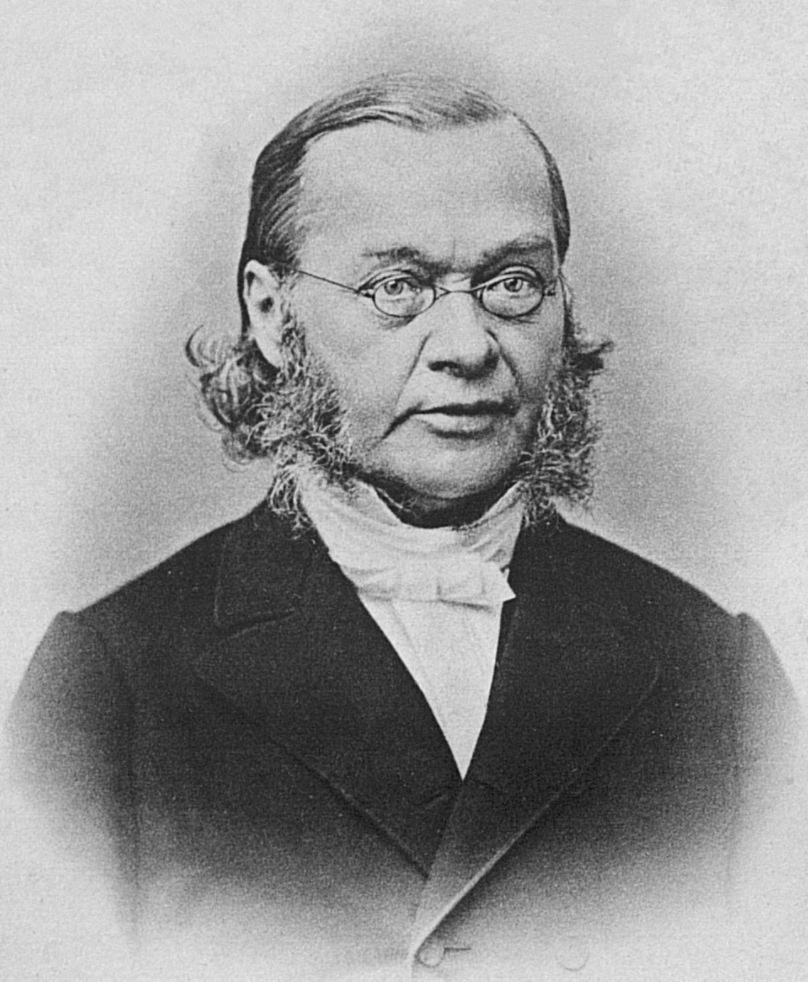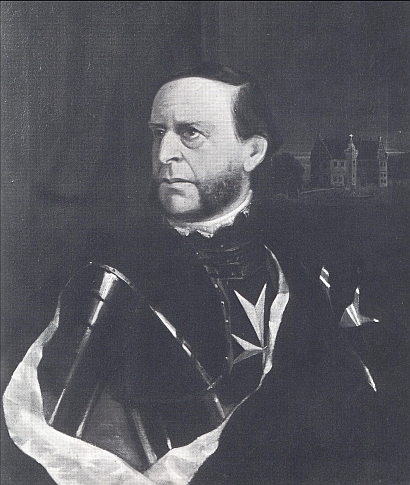|
Eberhard I, Count Of The Mark
Eberhard I (–4 July 1308) was a German nobleman. He was Count of the Mark from 1277 until his death. He was the son of Engelbert I, Count of the Mark and Kunigunde of Blieskastel (died 1265), daughter of Count Henry I of Blieskastel. In 1277, Count Herman of Lohn abducted Eberhard's father Engelbert I, Count of the Mark near Tecklenburg and imprisoned him in the Castle of Bredevoort, where he later died. In 1278 Eberhard took revenge and conquered the castle. From 1281, Eberhard formed an alliance with the Counts of Berg, Cleve and Jülich against the Electorate of Cologne and gained the independence of the County of Mark from the Archbishop of Cologne after the victory in the Battle of Worringen in 1288. He also obtained Brakel, Westhofen and Waltrop. Eberhard died 4 July 1308 and was buried in Fröndenberg Monastery. Marriage and children Eberhard married first about 29 January 1273 to Irmgard of Berg (c.1256–24 March 1294), daughter of Adolf VII of Berg. They had seve ... [...More Info...] [...Related Items...] OR: [Wikipedia] [Google] [Baidu] |
House Of La Marck
The House of La Marck (german: von der Mar(c)k) was a noble family, which from about 1200 appeared as the counts of Mark. History The family history started with Count Adolf I, scion of a cadet branch of the Rhenish Berg dynasty residing at Altena Castle in Westphalia. In the early 13th century Adolf took his residence at his family's estates around Mark, a settlement in present-day Hamm-Uentrop. Adolf had inherited the Mark fortress from his father Count Frederick I of Berg-Altena (d. 1198) together with the older county around Altena and began to call himself count de La Mark. Originally liensmen of the archbishops of Cologne in the Duchy of Westphalia, the family ruled the County of Mark, an immediate state of the Holy Roman Empire, and, at the height of their powers, the four duchies of Julich, Cleves, Berg and Guelders as well as the County of Ravensberg. Members of the family became bishops in the Prince-Bishoprics of Liège, Münster and Osnabrück, and Archbi ... [...More Info...] [...Related Items...] OR: [Wikipedia] [Google] [Baidu] |
Waltrop
Waltrop is a town in the district of Recklinghausen, in North Rhine-Westphalia, Germany. It is situated on the Datteln-Hamm Canal, approximately 15 km east of Recklinghausen and 15 km north-west of Dortmund. Division of the town The town of Waltrop is surrounded by the ''Bauerschaften'' (rural boroughs) Lippe (Unterlippe/Oberlippe), Elmenhorst, Brockenscheidt, Leveringhausen, Oberwiese and Holthausen. History People already settled in this area about 2,000 years ago. The village developed around the parish church of St. Peter which was built in the 9th/10th century. It is known that in 1432 Waltrop was a part of the county Dortmund. After the Soest Feud, the archbishops of Cologne could intervene against the counts of Mark, so that Waltrop became a part of Vest Recklinghausen. The production of coal in the mine started in 1905. As a consequence, Waltrop grew larger and became an industrial town. The coal mine was closed down in 1974. In 1939, Waltrop got its municipa ... [...More Info...] [...Related Items...] OR: [Wikipedia] [Google] [Baidu] |
Counts Of The Mark
The County of Mark (german: Grafschaft Mark, links=no, french: Comté de La Marck, links=no colloquially known as ) was a county and state of the Holy Roman Empire in the Lower Rhenish–Westphalian Circle. It lay on both sides of the Ruhr River along the Volme and Lenne rivers. The Counts of the Mark were among the most powerful and influential Westphalian lords in the Holy Roman Empire. The name ''Mark'' is recalled in the present-day district in lands south of the Ruhr in North Rhine-Westphalia, Germany. The northern portion (north of the Lippe river) is still called ("Higher Mark"), while the former "Lower Mark" (between the Ruhr and Lippe Rivers) is—for the most part—merged in the present Ruhr area. Geography The County of the Mark enclosed an area of approximately 3,000 km² and extended between the Lippe and Aggers rivers (north-south) and between Gelsenkirchen and Bad Sassendorf (west-east) for about 75 km. The east-west flowing Ruhr separated the count ... [...More Info...] [...Related Items...] OR: [Wikipedia] [Google] [Baidu] |
Count Of The Mark
The County of Mark (german: Grafschaft Mark, links=no, french: Comté de La Marck, links=no colloquially known as ) was a county and state of the Holy Roman Empire in the Lower Rhenish–Westphalian Circle. It lay on both sides of the Ruhr River along the Volme and Lenne rivers. The Counts of the Mark were among the most powerful and influential Westphalian lords in the Holy Roman Empire. The name ''Mark'' is recalled in the present-day district in lands south of the Ruhr in North Rhine-Westphalia, Germany. The northern portion (north of the Lippe river) is still called ("Higher Mark"), while the former "Lower Mark" (between the Ruhr and Lippe Rivers) is—for the most part—merged in the present Ruhr area. Geography The County of the Mark enclosed an area of approximately 3,000 km² and extended between the Lippe and Aggers rivers (north-south) and between Gelsenkirchen and Bad Sassendorf (west-east) for about 75 km. The east-west flowing Ruhr separated the count ... [...More Info...] [...Related Items...] OR: [Wikipedia] [Google] [Baidu] |
Adolph II De La Marck (Bishop)
Adolph II von der Mark (English: Adolph II of the Mark) (August 1288 – Clermont-sur-Meuse, 3 November 1344) was the Prince-Bishop of Liège from 1313 until his death in 1344. Adolph was the third son of Count Eberhard I of the Mark and Mary of Loon. Aged only 25, but through the influence of King Philip IV of France, he became Prince-Bishop of Liège in 1313. The people of the Prince-Bishopric opposed his authoritarian way of ruling. In 1316, he was forced to sign the Peace of Fexhe, which has been compared to ''Magna Carta'' and which limited his powers. When he tried to revert the treaty, he was forced to flee from Liège to Huy at the end of 1324. From here, he placed Liège under interdict. In 1333, he sold the Lordship of Mechelen to the Count of Flanders. He intervened in the War of Awans and Waroux and participated in the 1334 siege of Maastricht. When Louis VI of Loon died in 1336 without an heir, he tried to annex the County of Loon, but without success. In 1343, ... [...More Info...] [...Related Items...] OR: [Wikipedia] [Google] [Baidu] |
Adolf VII Of Berg
Adolf VII of Berg (also referred to as Adolf IV, especially in the Netherlands and in Germany) (c. 1220 – 22 April 1259) was the eldest son of Henry IV, Duke of Limburg and Irmgard of Berg.Walther Möller, ''Stammtafeln westdeutscher Adelsgeschlechter im Mittelalter'' (Darmstadt, 1922, reprint Verlag Degener & Co., 1995), Vol. 3, page 211. In 1247, Adolf succeeded his father as Count of Berg while his brother Waleran succeeded as Duke of Limburg. Adolf stood with his brother-in-law, Conrad of Hochstaden, Archbishop of Cologne, in the anti-Hohenstaufen camp, supporting King William II of Holland and received significant Imperial fiefs, including Kaiserswerth, Remagen, Rath, Mettmann and the Duisberg district of the national forest. In 1234, Adolf participated in the Crusade against the Stedinger. In 1255, he laid the foundation of the gothic Cathedral at Altena along with his brother Waleran. He died on 22 April 1259 as a result of wounds received during a tournament at Neuss. ... [...More Info...] [...Related Items...] OR: [Wikipedia] [Google] [Baidu] |
Fröndenberg
Fröndenberg (; Westphalian: ''Frönnenbiärg'') is a town in the district of Unna, in North Rhine-Westphalia, Germany. Geography Fröndenberg is situated in the Ruhr valley, approx. 10 km south-east of the district capital Unna, near the Hönne. Neighbouring places * Unna * Wickede * Menden * Schwerte * Holzwickede History The city as such is relatively new, it grew out of the reorganization in 1902 whereby the former independent villages Stift, Westick and village Froendenberg melted into the bigger village community of Fröndenberg. It obtained city status in 1952. The oldest record of the name ` Frundeberg` is the papal document by Coelestin III from 1197. The present day administrative infrastructure goes back to 1968 when the villages Altendorf, Ardey, Bausenhagen, Dellwig, Frohnhausen, Frömern, Langschede, Neimen, Ostbüren, Stentrop, Strickherdicke, the town of Warmen and the town of Fröndenberg were merged into one administrative unit. In 1969 the village Ben ... [...More Info...] [...Related Items...] OR: [Wikipedia] [Google] [Baidu] |
Westhofen
Westhofen is an ''Ortsgemeinde'' – a municipality belonging to a ''Verbandsgemeinde'', a kind of collective municipality – in the Alzey-Worms district in Rhineland-Palatinate, Germany. Geography Location Westhofen lies between Worms (roughly 12 km to the southeast), Mainz and Alzey in Rhenish Hesse and is part of the ''Verbandsgemeinde'' Wonnegau. Hydrology In Westhofen rises the Seebach, Rhenish Hesse's strongest spring. It is also the only spring in the region that rises in a valley. It is fed by groundwater from the Donnersberg area. History Westhofen had its first documentary mention as far back as Carolingian times and was granted market rights in 1324. Westhofen's importance in earlier times can be seen in the ring of defences around the village, which are still preserved, and which include a wall and several dykes. Politics Municipal council The council is made up of 20 council members, who were elected at the municipal election held on 7 June 20 ... [...More Info...] [...Related Items...] OR: [Wikipedia] [Google] [Baidu] |
Engelbert I, Count Of The Mark
Engelbert I, Count of the Mark (died 16 November 1277 at Castle of Bredevoort) was a German nobleman. He was the ruling Count of the Mark from 1249 until his death. Life He succeeded his father, Adolf I as the ruling count in 1249. His brother Otto, who had been a canon in Liège, returned to the lay state after their father's death and claimed a share of the inheritance. Engelbert ceded the castles at Altena and Blankenstein and the surrounding land to Otto. He was afraid that this might be the first step in the fragmentation of the county. However, Otto died without a male heir in 1262, and his possessions fell back to Engelbert. Early in his reign, a feud broke out between Engelbert II and his namesake, Archbishop Engelbert II of Cologne. They fought a number of battles and their troops devastated each other's territory; in 1265, they made peace. In 1262 Engelbert and William IV, Count of Jülich, came to the assistance of the Teutonic Knights during the Siege of Kön ... [...More Info...] [...Related Items...] OR: [Wikipedia] [Google] [Baidu] |
Brakel, Germany
Brakel () is a town in the district of Höxter in North Rhine-Westphalia, Germany. Geography Location Brakel lies at the midpoint of the district of Höxter between the Eggegebirge and the Weser in the Oberwälder Land nature area in the old Saxon region of Nethegau. Constituent communities Brakel consists of the following centres: ''Heggedörfer'' Auenhausen (population 130), Frohnhausen (population 309) and Hampenhausen (population 54) are Brakel's highest constituent communities, and are sometimes also known as the ''Heggedörfer''. Between 1142 and 1147, these three villages had their first documentary mention. In the 12th and 13th centuries, the Gehrden Monastery had holdings in these three villages. The Heggedörfer, along with the town of Gehrden, were amalgamated into the greater community of Brakel after the old district of Warburg was dissolved. Beller Beller has a population of 187. The village is named by the great fish called "Beller", that joined the ... [...More Info...] [...Related Items...] OR: [Wikipedia] [Google] [Baidu] |



